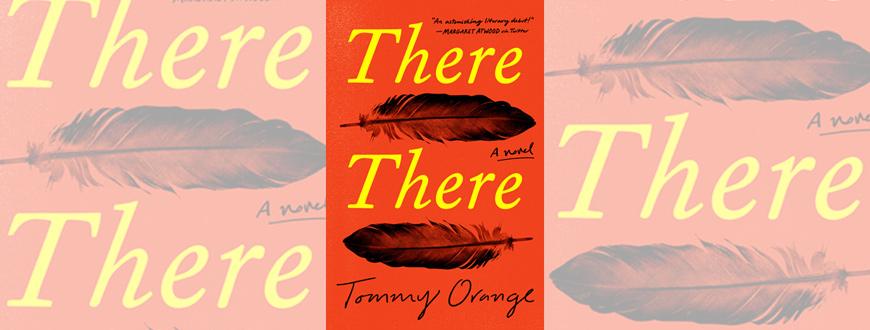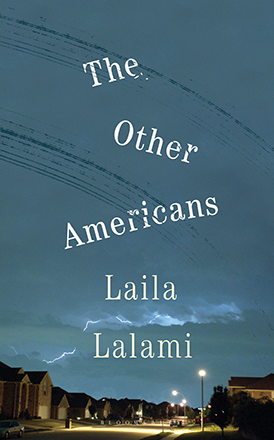You are here
Storytelling as healing
By Sally Bland - Nov 18,2018 - Last updated at Nov 18,2018

There There
Tommy Orange
New York: Alfred A. Knopf, 2018
Pp. 294
Tommy Orange’s writing is fresh, original and on the cutting edge of questions of identity and collective memory. While most Native American literature focuses on life in rural areas or reservations, Orange’s novel zooms in on the urban population, specifically those living in Oakland, California, many of whom are originally Cheyenne who migrated from Oklahoma. In his view, “Being Indian has never been about returning to the land. The land is everywhere or nowhere.” (p. 11)
The book’s title is inspired by the words of Gertrude Stein who grew up in Oakland. Returning after many years, she commented that there had been so much change “that the there of her childhood, the there there, was gone, there was no there there any more… “ (pp. 38-39)
Her sentiments express the experience of Native people all across the country.
In the prologue, Orange dispels a number of American myths, such as the origins of the Thanksgiving holiday, and goes on to recount some of the more gruesome atrocities inflicted on Native Americans by the white settlers. It is noticeable that he and his characters call themselves “Indian” at least as often as they use the term “Native American”, perhaps in acknowledgement of the extent to which their modern identity has been shaped by their encounter with the European-settler society which coined the term “Indian”. As Orange writes, “We’ve been defined by everyone else and continue to be slandered despite easy-to-look-up-on-the-internet facts about the realities of our history and current state as a people.” (p. 7)
Seen in this light, “There There” is an attempt at self-definition. It is also an attempt at healing: “The wound that was made when white people came and took all that they took has never healed… All these stories that we haven’t been telling all this time, that we haven’t been listening to, are just part of what we need to heal.” (p. 137)
The stories Orange relates are by turn funny, tragic, heart-warming and disturbing, but always mind-opening. In relatively short successive chapters, Orange introduces a set of quirky but believable characters. It is their diversity and commonalities which contribute to a new definition of urban Native American identity, but Orange does not spell it out in so many words. The reader has to stay alert.
Among many fascinating characters, there is street-wise Tony, born with foetal alcohol syndrome—“it’s the way history lands on a face”--who gets involved with a local gang due to his trade of selling marijuana. (p. 16)
There is Dene who aspires to make a movie documenting Indian stories that are not pathetic as in the past, but full of passion and rage. There are half-sisters Opal Bear Shield and Jacqui Red Feather whose mother took them to the big Native American gathering at Alcatraz which aimed to unite people but led to the break-up of their family. There is Edwin, an aspiring writer who has a degree in Native American literature but seems immobilised by his obesity and not knowing who his father is. There is Orvil who takes up Indian dancing as a teenager despite his grandmother’s having discouraged all things Indian. Finally, as if to remind that it is not only Native Americans whose lives get destroyed by the system, Orange includes Edwin’s mother’s boyfriend, a Vietnam vet who returned half-crazy from the war but received no support.
There are many other characters to add to the diversity that being Indian includes. All are poor; most have trouble landing a fulfilling job. Most of the young feel let down by adults. Some are half-white; all have been raised by relatives but none in a “model” American family by both their biological mother and father. Some have been raised in awareness of their native American culture, others not. Some of their stories are intertwined, and they will eventually all head for the annual Big Oakland Pow Wow, each with his or her own motivation. There will be surprises, discoveries of kinship and reunions, as well as final separations.
Orange’s novel seems intended to crack the paradox of authenticity as articulated by Edwin: “The problem with Indigenous art in general is that it’s stuck in the past. The catch, or double bind, about the whole thing is this: If it isn’t pulling from tradition, how is it Indigenous? And if it is stuck in tradition, in the past, how can it be relevant to other Indigenous people living now, how can it be modern?” (p. 77)
The story also debunks the long-held myth that there is a special relationship between Indians and alcohol. As one character says, “We all been through a lot we don’t understand in a world made to either break us or make us so hard we can’t break even when it’s what we need most to do.” (p. 112)
In this situation, alcohol is just what is cheap and easily available to ease the pain and misery of a life out of control.
Orange’s prose is raw, but his portrayal of his urban Indian characters is gentle and compassionate. His stories reassert that no culture is monolithic and that a people’s history should include not only their memories but their dreams, whether fulfilled or not.
Related Articles
The Moor’s AccountLaila LalamiNew York: Vintage Books, 2015Pp.
The Night WatchmanLouise ErdrichNew York: Harper Perennial, 2021Pp.













